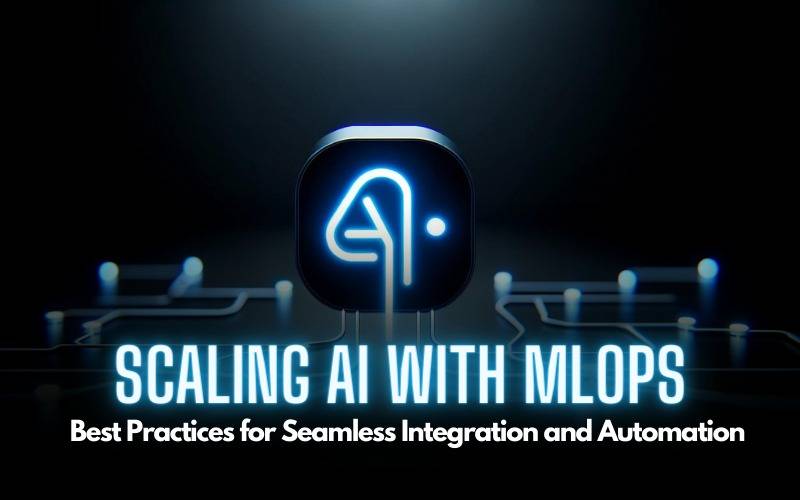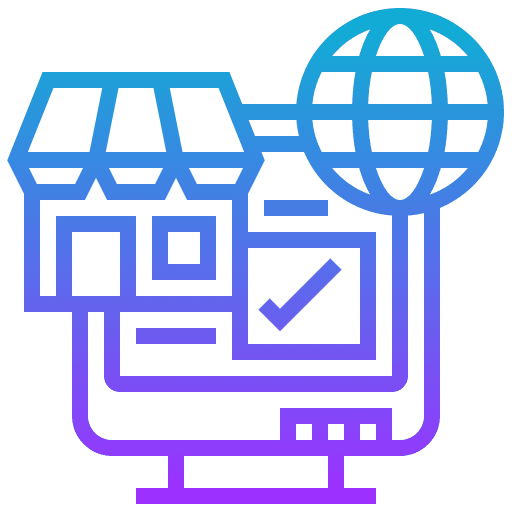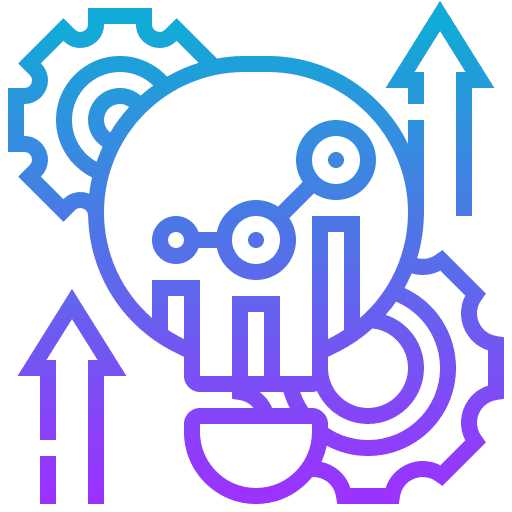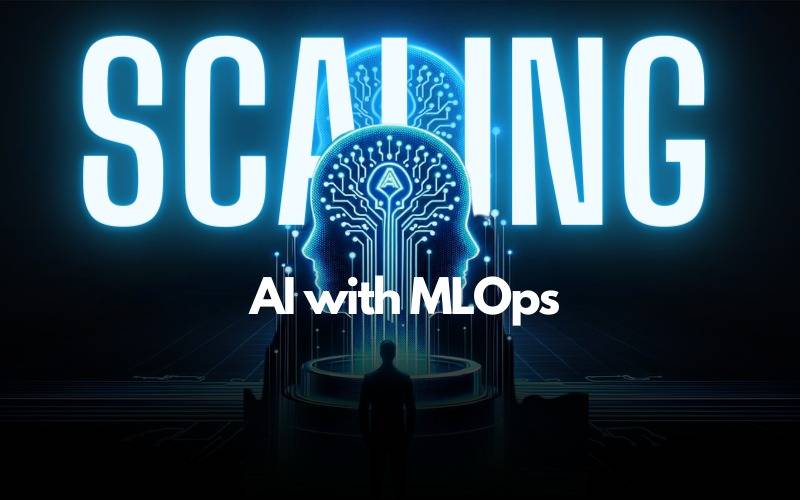Scaling AI with MLOps: Best Practices for Seamless Integration and Automation
How can businesses harness the explosive growth of AI without getting overwhelmed by its complexities? Enter Scaling AI with MLOps—a critical framework that not only enhances the deployment of machine learning models but also ensures their effective management across various business environments. At the core of MLOps is the seamless integration and automation of models, essential for smooth and effective operations. This method ensures AI systems align with business objectives, simplifying the use of AI technologies.
Why is this integration crucial? By automating repetitive tasks and integrating AI into existing systems, MLOps streamlines operations and minimizes errors. This shift allows companies to focus on innovation and swiftly adapt to market changes, ensuring their AI solutions remain impactful. In this blog, we’ll explore how effectively implementing MLOps achieves these outcomes.
What is MLOps?
Machine Learning Operations (MLOps) is a multidisciplinary field that combines Machine Learning (ML), DevOps, and data engineering to streamline and automate the lifecycle of ML models. MLOps aims to bridge the gap between the experimental development of ML models and their operational deployment, ensuring that these models are not only developed but also maintained, scaled, and improved over time within production environments.
Importance in the AI Lifecycle
MLOps is crucial in the AI lifecycle because it provides a structured approach for moving models from development to deployment and maintenance efficiently. This process includes:
- Continuous integration, delivery, and deployment (CI/CD) of models,
- Automated testing and monitoring of model performance,
- Management of data and model versioning.
These practices ensure that ML models remain relevant and perform optimally as they scale across different environments and data sets, thereby maximizing the return on investment in AI technologies.
Contrast with Traditional Operations
Unlike traditional software operations, MLOps addresses unique challenges associated with AI and ML systems, such as:
Model Decay: ML models can degrade over time if not continuously updated with new data, unlike traditional software that might only require occasional updates.
Data Dependencies: ML models are heavily dependent on the data quality and structure, making data management a critical component of MLOps.
Experimentation and Testing: The iterative nature of model building requires robust mechanisms for experimentation, testing, and rollout, which are more complex than those used in traditional software development.
By integrating these specialized practices, MLOps enables organizations to leverage AI technologies more effectively and sustainably, ensuring that these systems deliver consistent value as they are scaled. In this blog, we’ll delve deeper into how organizations can implement MLOps to enhance their AI initiatives and the tools and strategies that make it possible.

Key Components of MLOps
Overview of the MLOps Ecosystem
The MLOps ecosystem is rich with tools, platforms, and technologies designed to enhance the efficiency and effectiveness of machine learning workflows. Core among these tools are:
TensorFlow and PyTorch: These are powerful libraries for building and training machine learning models. TensorFlow is known for its flexible and comprehensive ecosystem of tools, libraries, and community resources that allow researchers to push the state-of-the-art in ML, and PyTorch offers dynamic computation graphs that allow for flexibility in building complex architectures.
Kubernetes: This is a container orchestration platform that supports the deployment and management of scalable and distributed machine learning models. It’s particularly useful for managing the lifecycle of models that need to be deployed across various environments.
Docker: Docker containers encapsulate a model and its dependencies in a form that can run anywhere, ensuring consistency across different stages of the ML lifecycle.
Detailed Exploration of Core Components
Data Management: At the heart of MLOps, efficient data management involves organizing, securing, and ensuring data is accessible and of high quality for model training and inference. This includes managing data ingestion, validation, preprocessing, and versioning.
Model Training: In MLOps, model training utilizes historical data to develop ML models through selecting algorithms, features, and hyperparameters. This process is automated and continuously improved via CI/CD practices.
Deployment: Trained and validated models are deployed into production environments, setting up infrastructure to handle inference requests. MLOps automates and integrates deployment processes into existing systems.
Monitoring: Continuous monitoring of models post-deployment ensures they perform as expected, tracking metrics like model performance and data drift to determine when updates or retraining are needed.
Governance: MLOps governance involves ensuring all operations comply with regulatory and ethical standards, covering model auditability, compliance, and security to maintain trust and accountability.
Scaling AI with MLOps
Scaling AI with MLOps is an essential approach to managing the growth and complexity of artificial intelligence in modern business environments. As organizations increasingly rely on AI to drive decision-making and automate processes, MLOps (Machine Learning Operations) provides a structured methodology to ensure AI models are not only developed but also maintained, scaled, and improved over time.
This involves integrating best practices from software development and operations into the machine learning lifecycle, enabling continuous integration, delivery, and deployment of AI models. MLOps also focuses on automating the machine learning pipeline and establishing rigorous governance and monitoring systems. This ensures that AI systems are reliable, performant, and aligned with business goals, thereby enabling organizations to harness the full potential of AI technologies effectively and sustainably.

Best Practices for Integration
Strategies for Integrating MLOps into Existing Workflows: Efficiently incorporating MLOps requires a strategic approach where APIs, containers, and microservices play pivotal roles. APIs facilitate seamless interactions between different software components, containers ensure consistency across environments, and microservices allow for the scalable and flexible deployment of services. Together, these technologies support the decomposition of large systems into smaller, manageable parts, enabling better maintainability and quicker updates.
Enhancing MLOps Integration: Using containers and microservices not only simplifies the deployment process but also helps in maintaining version control and dependency management across different stages of the ML lifecycle. This leads to more robust and agile AI applications, capable of adapting to new requirements with minimal disruption.
Automating MLOps
Importance of Automation: Automation in MLOps streamlines repetitive tasks, reduces the scope for human error, and ensures that models are systematically updated and maintained. This includes setting up CI/CD pipelines for continuous integration and delivery, which allows for the automatic testing and deployment of models, thus accelerating the development cycle and enhancing productivity.
Examples of Automation in Action: Implementing automated testing and model validation processes not only speeds up the deployment cycle but also ensures the reliability and accuracy of machine learning models under varying conditions. This robust framework supports a continuous feedback loop, where models are consistently evaluated and improved.
Challenges and Solutions
Common Obstacles in Scaling AI with MLOps: Issues such as data silos, lack of skilled personnel, and integration complexities often hinder the scaling of AI technologies. Addressing these challenges requires a combination of technical know-how, strategic planning, and organizational change management.
Practical Solutions: Effective solutions include adopting standardized platforms for data management, providing continuous training and development for teams, and employing advanced analytics to preemptively identify and mitigate potential failures.
The Future of MLOps
Emerging Trends and Technologies: The future of MLOps looks promising with the advent of technologies such as federated learning for enhanced privacy, automated neural architecture search (NAS) for optimizing model designs, and quantum computing to revolutionize processing power.
Predictions on MLOps Evolution: As AI becomes more pervasive, MLOps will likely focus on further simplifying the complexities of managing large-scale machine learning projects, improving the interpretability of AI models, and enhancing collaborative tools that bridge the gap between data scientists and operational teams.
These sections aim to provide a deeper understanding of MLOps, illustrating not just the current landscape but also the potential and challenges that lie ahead in the realm of AI and machine learning.
Conclusion
Throughout this exploration of Scaling AI with MLOps, we’ve uncovered the critical role that MLOps plays in enhancing the scalability and efficiency of AI applications. As we’ve seen, the integration of MLOps not only streamlines operations but also ensures continuous improvement and management of AI models, making it an indispensable strategy for modern businesses aiming to leverage AI effectively.
Adopting the best practices discussed—such as leveraging automation, enhancing integration through APIs and microservices, and embracing continuous learning within your teams—can significantly improve your AI initiatives. As the field of MLOps continues to evolve, staying updated with the latest developments and continuously refining your approach will be key to maintaining a competitive edge.
Frequently Asked Questions
1. What technologies are typically involved in an MLOps ecosystem?
MLOps ecosystems often include tools and platforms like TensorFlow, PyTorch for model building and training, and Kubernetes and Docker for containerization and orchestration, facilitating the deployment and scaling of AI models.
2. What role do CI/CD pipelines play in MLOps?
Continuous Integration and Continuous Deployment (CI/CD) pipelines automate the testing and deployment of machine learning models, promoting frequent updates and maintaining model accuracy in production environments.
3. How can microservices architecture benefit MLOps practices?
Microservices architecture decomposes applications into smaller, independent services, improving modularity and making it easier to scale and update components of MLOps pipelines without affecting the entire system.
4. What are some effective strategies for data management in MLOps?
Effective data management strategies in MLOps involve ensuring data quality, managing data access, versioning data sets, and implementing robust data ingestion and preprocessing workflows to feed into machine learning models accurately.













